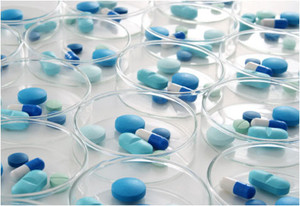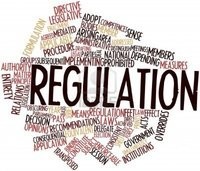As part of its ongoing efforts to provide product-specific guidance for generics makers the US Food and Drug Administration (FDA) has again released several new and revised bioequivalence documents. The agency announced on 1 February 2018 that it had released 35 new draft guidance documents and 22 revisions to guidance documents on bioequivalence requirements for the development of generics containing 49 different active ingredients.
The new draft bioequivalence guidance documents cover generics of Takeda’s multiple myeloma drug Ninlaro (ixazomib), attention-deficit/hyperactivity disorder (ADHD) treatment Ritalin-SR (methylphenidate HCl) from Novartis, Bayer’s Aleve-D Sinus & Cold (naproxen/pseudoephedrine) and Merck’s cholesterol lowering medication Zocor (simvastatin) among others, see Table 1.
Revised bioequivalence guidance documents include those for generics of Bristol-Myers Squibb’s hepatitis C treatment Daklinza (daclatasvir dihydrochloride), anticonvulsant felbamate, proton pump inhibitors lansoprazole and dexlansoprazole, and opioid pain treatment oxycodone, among others, see Table 2.
FDA bioequivalence requirements demand that the generic drug performs in the same way in the body and has the same active ingredient(s), strength, dosage form and route of administration as the brand-name reference drug.
Table 1: FDA new draft bioequivalence guidance documents
| Active ingredient
|
Route of administration
|
Dosage form
|
Link
|
| Alcaftadine
|
Ophthalmic
|
Drops/ solution 0.25%
|
Click here
|
| Amitriptyline hydrochloride/ chlordiazepoxide
|
Oral
|
Tablet
|
Click here
|
| Amphetamine sulfate
|
Oral
|
Tablet
|
Click here
|
| Barium sulfate
|
Oral
|
Suspension 98% (334g/ bottle)
|
Click here
|
| Barium sulfate
|
Oral
|
Suspension 2% (9g/ 450 mL)
|
Click here
|
| Betamethasone dipropionate
|
Topical
|
Ointment, augmented
|
Click here
|
| Bimatoprost
|
Ophthalmic
|
Drops/ solution 0.03%
|
Click here
|
| Bimatoprost
|
Ophthalmic
|
Drops/ solution 0.01%
|
Click here
|
| Bimatoprost
|
Topical
|
Drops/ solution 0.03%
|
Click here
|
| Bupivacaine
|
Injectable
|
Liposomal, injection
|
Click here
|
| Buprenorphine hydrochloride
|
Buccal
|
Film
|
Click here
|
| Cabozantinib S-malate
|
Oral
|
Capsule
|
Click here
|
| Cabozantinib S-malate
|
Oral
|
Tablets
|
Click here
|
| Crisaborole
|
Topical
|
Ointment
|
Click here
|
| Desonide
|
Topical
|
Aerosol foam
|
Click here
|
| Doxycycline hyclate
|
Oral
|
Tablet
|
Click here
|
| Fluocinonide
|
Topical
|
Cream
|
Click here
|
| Hydrocortisone valerate
|
Topical
|
Cream
|
Click here
|
| Ixazomib citrate
|
Oral
|
Capsule
|
Click here
|
| Ketoconazole
|
Oral
|
Tablet
|
Click here
|
| Leuprolide acetate; Norethindrone acetate
|
Oral/ intermuscular
|
Tablet/ injectable depot
|
Click here
|
| Levetiracetam
|
Oral suspension
|
Tablet
|
Click here
|
| Levocetirizine dihydrochloride
|
Oral
|
Tablet
|
Click here
|
| Loteprednol etabonate
|
Ophthalmic
|
Suspension/drops; 0.2%
|
Click here
|
| Mebendazole
|
Oral
|
Tablet, chewable
|
Click here
|
| Naldemedine tosylate
|
Oral
|
Tablet
|
Click here
|
| Naproxen sodium/ pseudoephedrine hydrochloride
|
Oral
|
Tablet, ER
|
Click here
|
| Niraparib tosylate
|
Oral
|
Capsule
|
Click here
|
| Olopatadine hydrochloride
|
Ophthalmic
|
Drops/ solution
|
Click here
|
| Prasterone
|
Vaginal
|
Insert
|
Click here
|
| Rucaparib camsylate
|
Oral
|
Tablet
|
Click here
|
| Safinamide mesylate
|
Oral
|
Tablet
|
Click here
|
| Simvastatin/ sitagliptin phosphate
|
Oral
|
Tablet
|
Click here
|
| Soybean oil
|
Injectable
|
Injection
|
Click here
|
| Soybean oil
|
Injectable
|
Injection
|
Click here
|
| ER: extended release.
|
Table 2: FDA revised draft bioequivalence guidance documents
| Active ingredient
|
Route of administration
|
Dosage form
|
Link
|
| Aspirin/ omeprazole
|
Oral
|
Tablet, DR
|
Click here
|
| Cysteamine bitartrate
|
Oral
|
Tablet, DR
|
Click here
|
| Daclatasvir dihydrochloride
|
Oral
|
Tablet
|
Click here
|
| Dexlansoprazole
|
Oral
|
Tablet, DR, OD
|
Click here
|
| Dexlansoprazole
|
Oral
|
Capsule, DR
|
Click here
|
| Esomeprazole magnesium
|
Oral
|
Powder for suspension, DR
|
Click here
|
| Esomeprazole magnesium
|
Oral
|
Capsule, DR
|
Click here
|
| Felbamate
|
Oral
|
Suspension
|
Click here
|
| Felbamate
|
Oral
|
Tablet
|
Click here
|
| Fluconazole
|
Oral
|
Tablet
|
Click here
|
| Gatifloxacin
|
Ophthalmic
|
Solution
|
Click here
|
| Gentamicin sulfate
|
Ophthalmic
|
Drops/ solution
|
Click here
|
| Ketorolac tromethamine
|
Nasal
|
Spray
|
Click here
|
| Lansoprazole
|
Oral
|
Tablet, DR, OD
|
Click here
|
| Loteprednol etabonate
|
Ophthalmic
|
Suspension/drops; 0.5%
|
Click here
|
| Morphine sulfate
|
Oral
|
Capsule, ER
|
Click here
|
| Naloxegol oxalate
|
Oral
|
Tablet
|
Click here
|
| Oxycodone
|
Oral
|
Capsule, ER
|
Click here
|
| Pantoprazole sodium
|
Oral
|
Powder for Suspension, DR
|
Click here
|
| Potassium citrate
|
Oral
|
Tablet, ER
|
Click here
|
| Sulfamethoxazole; trimethoprim
|
Oral
|
Tablet
|
Click here
|
| Triamcinolone acetonide
|
Dental
|
Paste
|
Click here
|
| DR: delayed release; ER: extended release; OD: orally disintegrating.
|
The draft guidance documents recommend what in vivo and in vitro studies generics companies should carry out in order to demonstrate bioequivalence. The number of studies, the population to be studied, blood sampling time points and analytes to be measured in blood samples are also detailed in the draft guidance documents. Some of the documents also provide discussion on data formats.
FDA also has an overarching guidance document on bioequivalence recommendations for specific products [1], as well as a dissolution methods database.
FDA Commissioner Scott Gottlieb said that to date the agency has ‘now published about 1,600 of these product-specific guidances laying out the path for developing generics to specific products; including more than 350 guidances for developing generics of complex drugs’.
Comments on the draft guidance documents can be posted to the Division of Dockets Management (DDM) under Docket FDA-2007-D-0369-0015. This can be done via the website www.regulations.gov or written comments can be mailed to DDM (HFA-305), FDA, 5630 Fishers Lane, Rm. 1061, Rockville, MD 20852.
Related article
FDA releases 52 new and revised bioequivalence guidelines for generics
Reference
1. GaBI Online - Generics and Biosimilars Initiative. US guidelines for generics [www.gabionline.net]. Mol, Belgium: Pro Pharma Communications International; [cited 2018 Apr 6]. Available from: www.gabionline.net/Guidelines/US-guidelines-for-generics
Permission granted to reproduce for personal and non-commercial use only. All other reproduction, copy or reprinting of all or part of any ‘Content’ found on this website is strictly prohibited without the prior consent of the publisher. Contact the publisher to obtain permission before redistributing.
Copyright – Unless otherwise stated all contents of this website are © 2018 Pro Pharma Communications International. All Rights Reserved.








 0
0











Post your comment